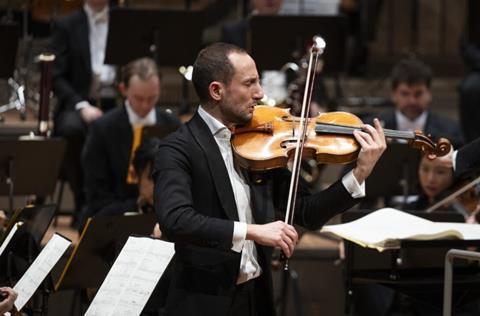Carlos Maria Solare hears the performance of Jörg Widmann and Bruckner at the Berlin Philharmonie on 20 January 2024

Tailor-made for Antoine Tamestit, Jörg Widmann’s Viola Concerto takes into account not just his musical persona but also his considerable thespian gifts, the soloist being required to wander about the stage following a detailed mapping printed in the score. First sitting inconspicuously near the harps, the soloist starts by gently tapping on the viola’s body and eventually plucking its strings (shades of Berio’s Naturale), before ‘finding’ a bow that opens up a new world: swishing sounds redolent of Sciarrino lead to some flautando effects on the C string, first joined by the bass flute, then by the clarinets in Middle Eastern modus. An encounter with the double bass section turns into a scary experience, but the violist is now exploring the whole range of the fingerboard in virtuosic runs and passages of double stops, humming along and finally letting out a primeval scream of frustration. All ends well, however, with the viola soaring above the muted strings in a concluding section of aching lyricism.
Read: Antoine Tamestit on the ‘Mahler’ Stradivari viola
Read: Sentimental Work: Antoine Tamestit on Mozart’s Sinfonia concertante
Tamestit has performed Widmann’s concerto some 40 times since premiering it in 2015, roughly half of them with Daniel Harding conducting. Theirs is the art that conceals art: you could readily believe that the piece is being created in real time before your eyes and ears, and the aplomb with which Tamestit delivered Widmann’s unconventional writing defied criticism. It also inspired his confrères in the Berlin Phil, who rounded off the concert with an impressive traversal of Bruckner’s Fourth Symphony.
CARLOS MARÍA SOLARE










































No comments yet